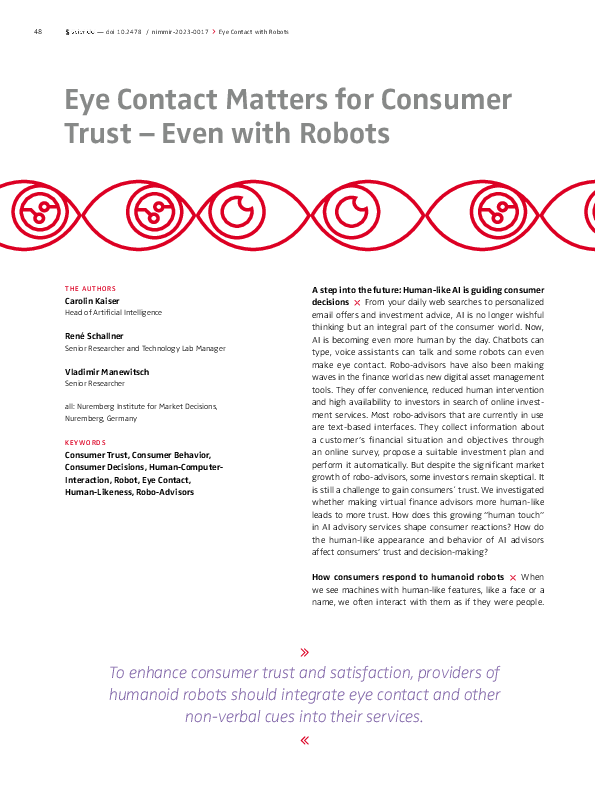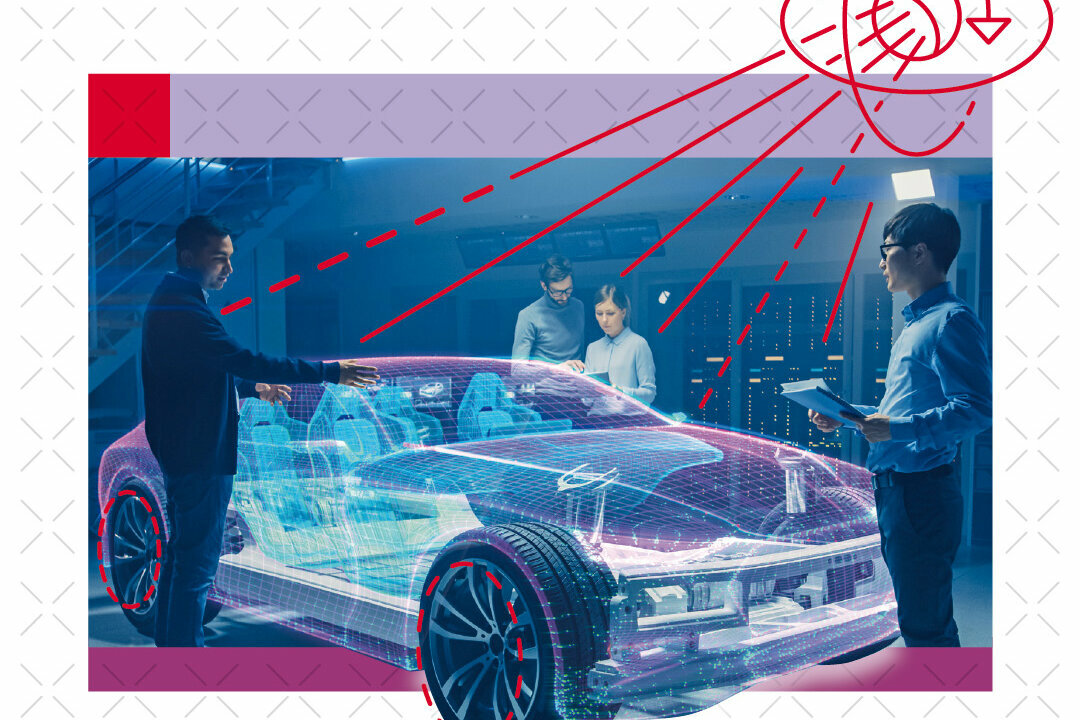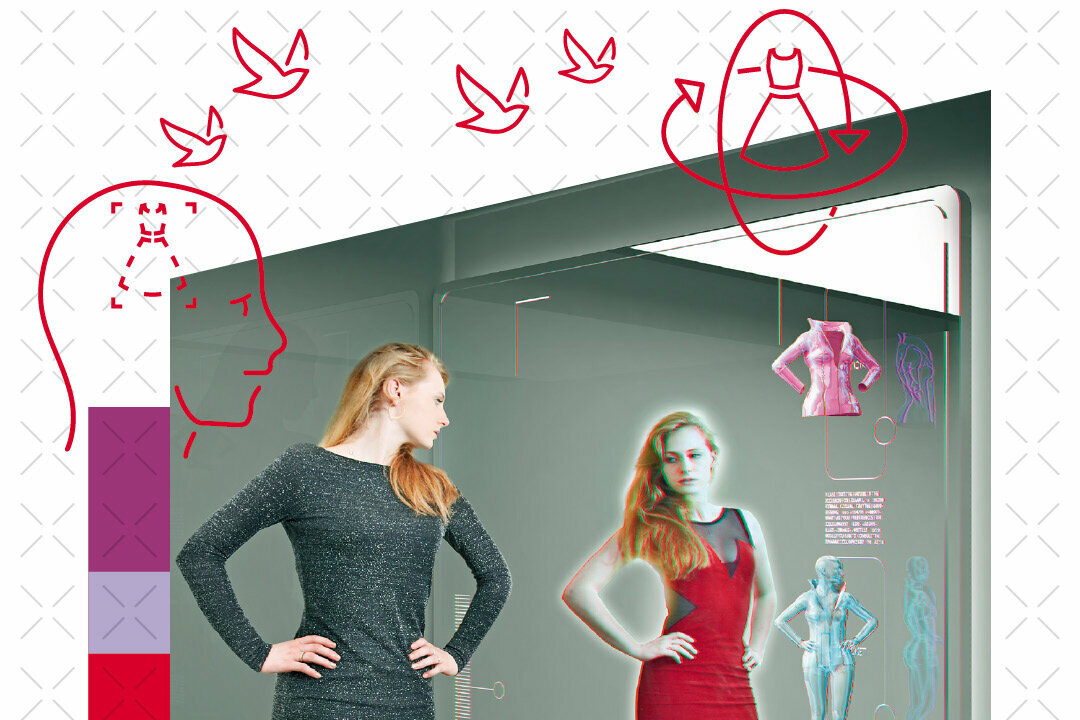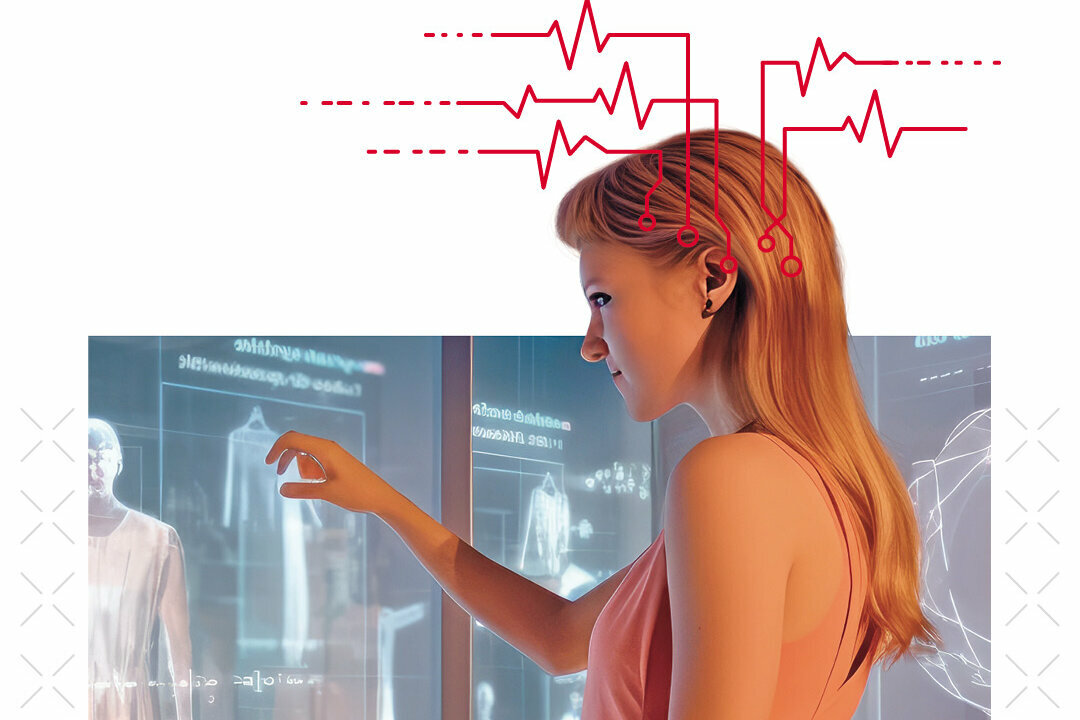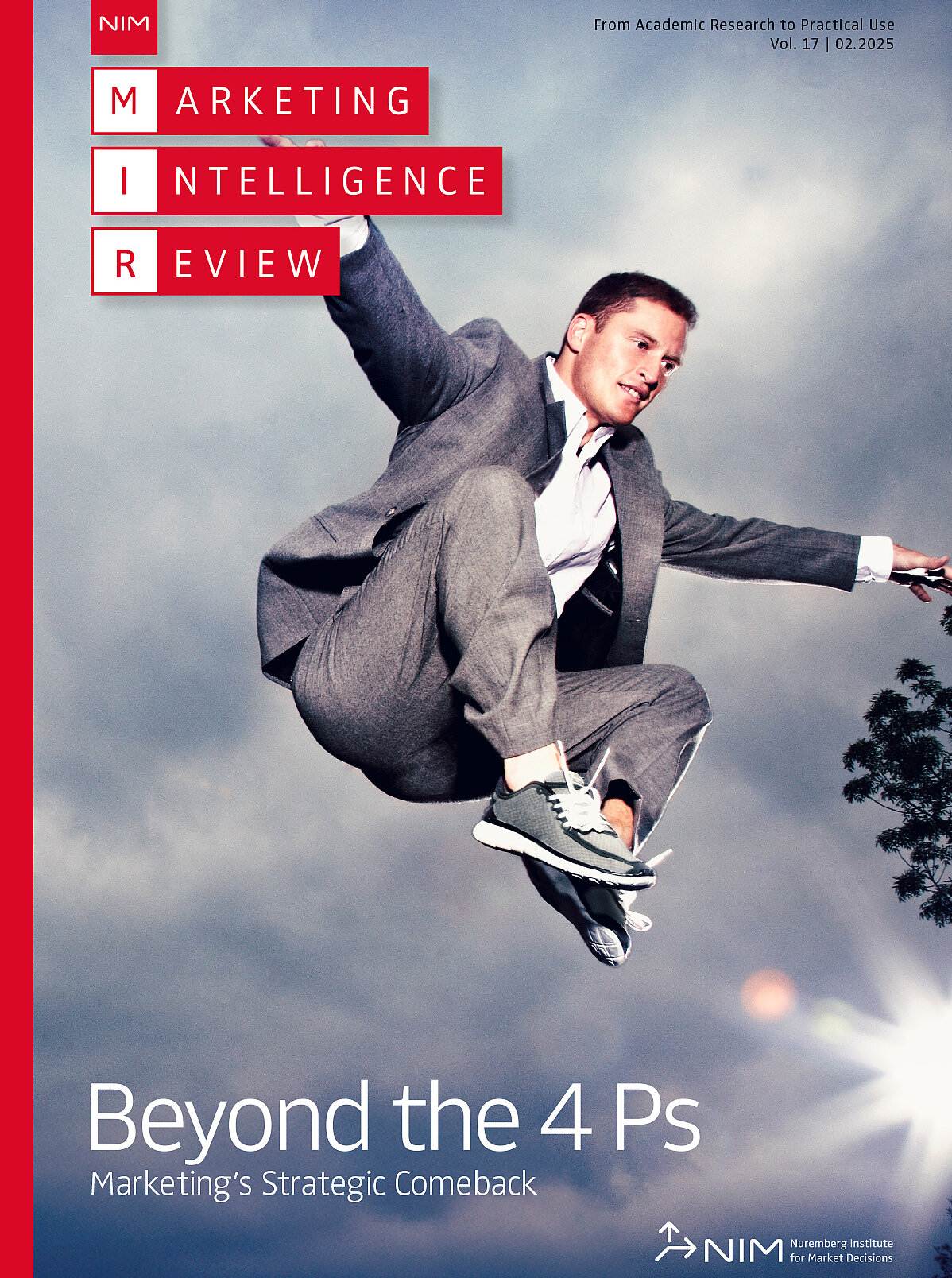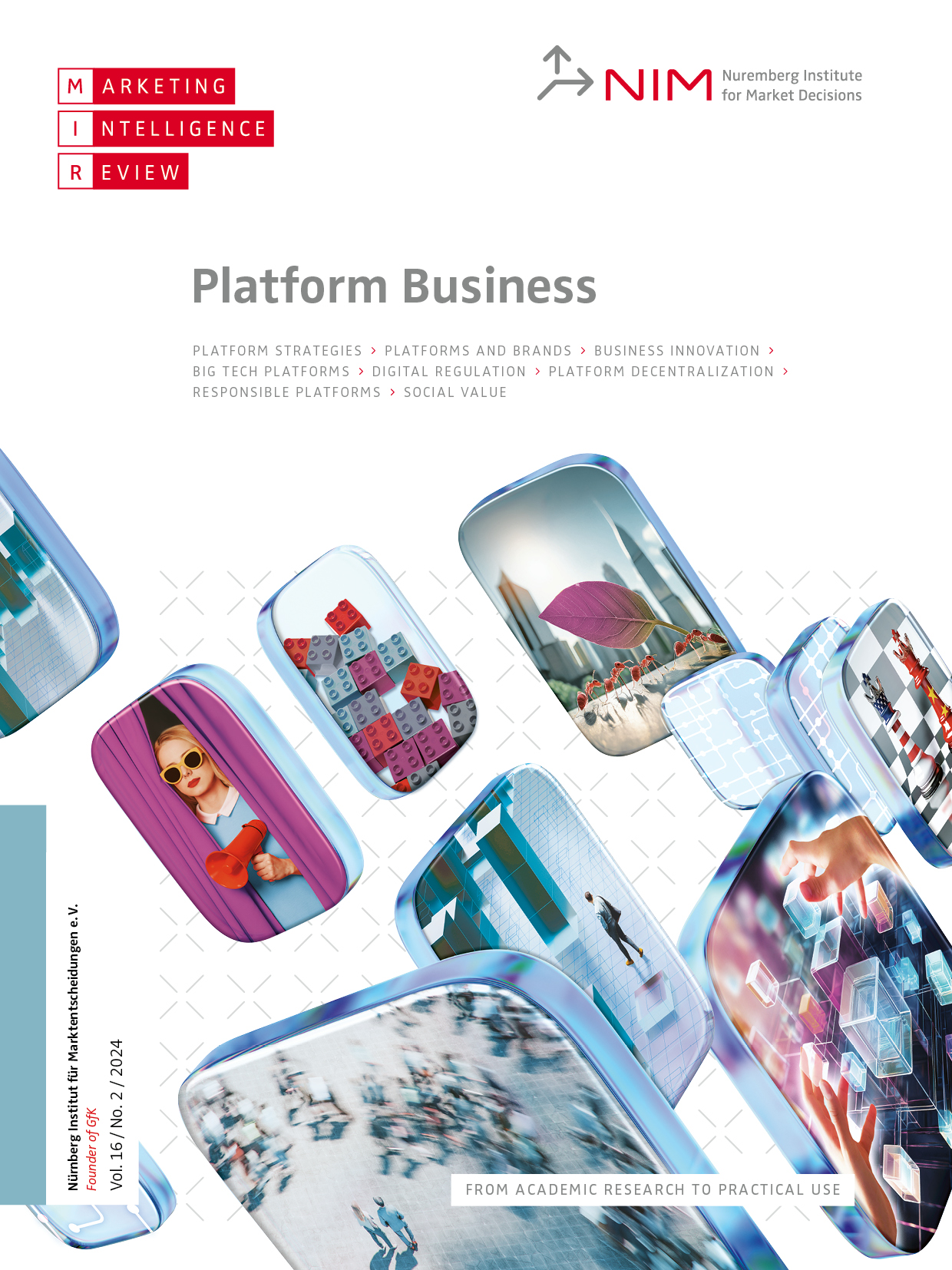Kaiser, C., Schallner, R., & Manewitsch, V. (2023). Eye Contact Matters for Consumer Trust – Even with Robots. NIM Marketing Intelligence Review, 15(2) 48-53. https://doi.org/10.2478/nimmir-2023-0017
Eye Contact Matters for Consumer Trust – Even with Robots
A step into the future: Human-like AI is guiding consumer decisions
From your daily web searches to personalized email offers and investment advice, AI is no longer wishful thinking but an integral part of the consumer world. Now, AI is becoming even more human by the day. Chatbots can type, voice assistants can talk and some robots can even make eye contact. Robo-advisors have also been making waves in the finance world as new digital asset management tools. They offer convenience, reduced human intervention and high availability to investors in search of online investment services. Most robo-advisors that are currently in use are text-based interfaces. They collect information about a customer’s financial situation and objectives through an online survey, propose a suitable investment plan and perform it automatically. But despite the significant market growth of robo-advisors, some investors remain skeptical. It is still a challenge to gain consumers´ trust. We investigated whether making virtual finance advisors more human-like leads to more trust. How does this growing “human touch” in AI advisory services shape consumer reactions? How do the human-like appearance and behavior of AI advisors affect consumers’ trust and decision-making?
To enhance consumer trust and satisfaction, providers of humanoid robots should integrate eye contact and other non-verbal cues into their services.
How consumers respond to humanoid robots
When we see machines with human-like features, like a face or a name, we often interact with them as if they were people. For example, in a voice shopping experiment, we found that a happy artificial voice can elicit similar positive emotions and consumer satisfaction as a happy human voice. The more human-like an artificial agent appears, the more likely we are to trust it. For example, people have higher trust in autonomous driving if the self-driving car has a name, gender and voice. On an e-commerce site, people find virtual shopping assistants more likable, appropriate and trustworthy when they look more like humans than like cartoons. However, there are many factors that make us human, such as gestures, facial expressions, speech and behavior. In this study (see Box 1), we investigated how employing human-like agents as financial robo-advisors impacts consumer trust and investment decisions compared to human agents or text-based services. We further tested how eye contact, which is one of the most important non-verbal signals of social interaction between people (see Box 2), affects trust and investment decisions when it comes to robots.
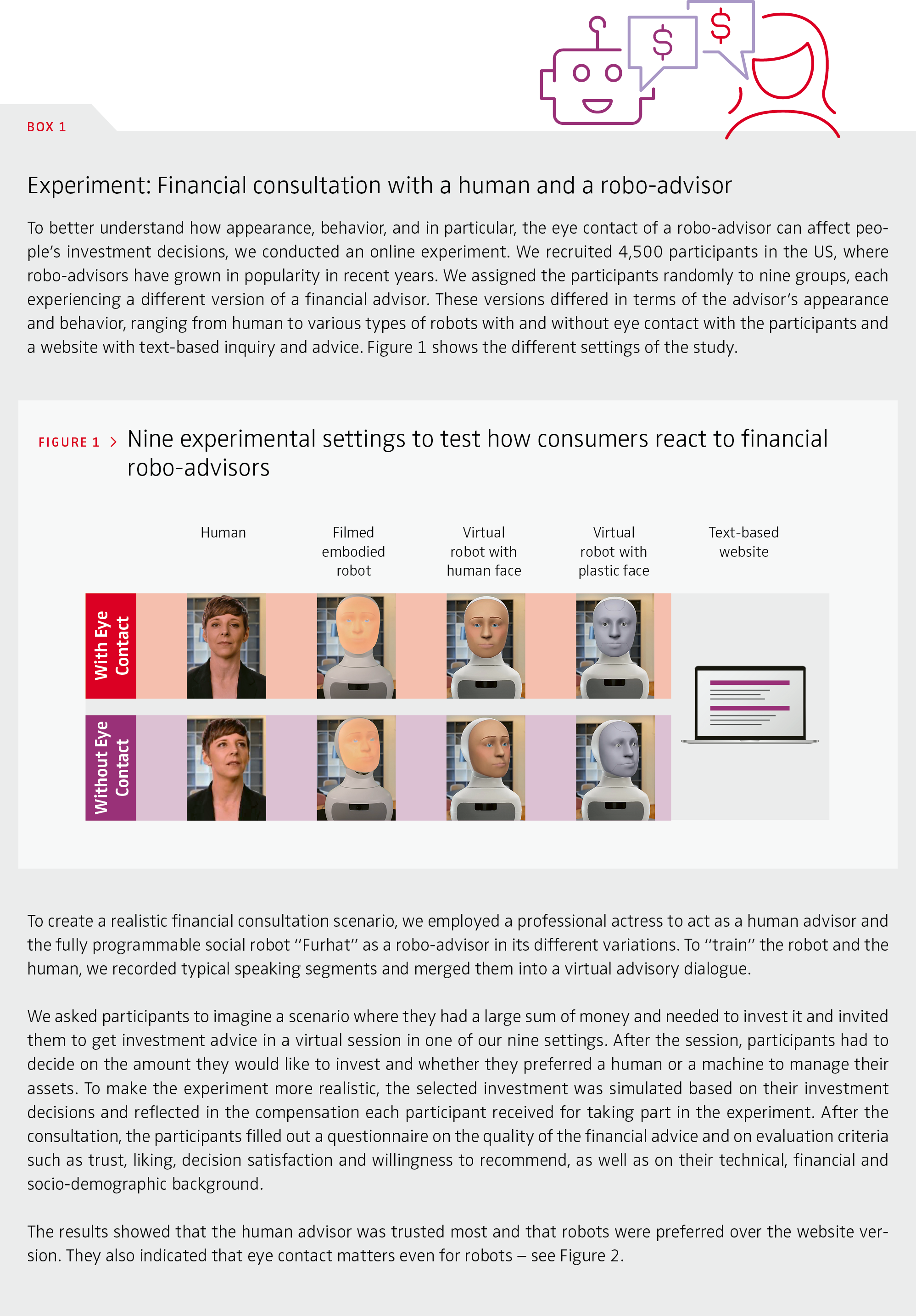

People trusted human advisors more than robotic ones, but robotic advisors performed better than text-based websites.
Human-like advisors are preferred over text-based services
People trusted human advisors more than robotic ones, but robotic advisors performed better than text-based websites. Participants who had a consulting session with a robotic advisor were more satisfied with their decision and the overall service and found the recommendation more relevant than participants with a text-based website consulting session. When deciding between machine- or human-managed assets, participants who consulted with a robotic advisor were more likely to choose the machine-managed assets than participants who consulted with a text-based website. This shows that the human-likeness of the consulting interface impacts not only peoples’ attitude toward the consulting service but also their decision whom to entrust with the management of their assets – robot or human. The impact of the human-likeness of the interface is small but significant and should not be neglected. The human-like appearance of the advisor makes a difference – and if he behaves more like a human, it makes even more difference.
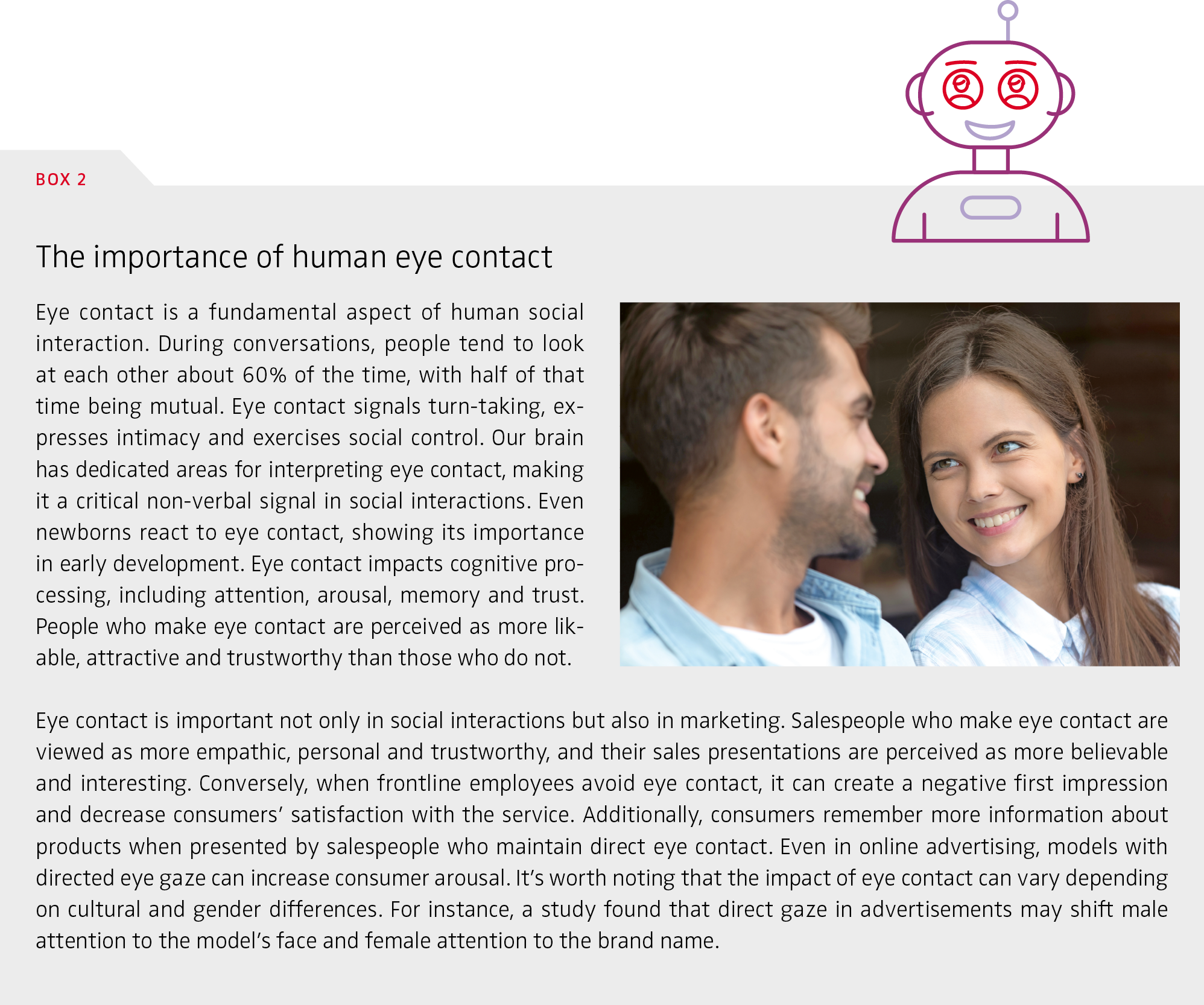
Eye contact is key even when consumers are dealing with robots
Eye contact is important for pleasant and productive social interactions. Previous studies have shown that a robot that looks at you with its plastic eyes can evoke a similar response as human eye contact. People tend to react positively to robots making eye contact, perceiving them as more social and intelligent. Additionally, people tend to be more honest when in the presence of a robot making eye contact. Our study also reveals that eye contact with a robotic advisor has similar effects as eye contact with a human advisor and is essential for trust and satisfaction.
Human-likeness increases consumers’ trust in robots
The participants who had eye contact with the robotic advisor (see the red column in Figure 2) rated the advisor as more competent, trustworthy and likable and showed a higher overall satisfaction and willingness to recommend the service in contrast to participants who did not have eye contact with the robotic advisor (see the purple column in Figure 2). The impact of eye contact is subtle and small but significant and should not be ignored. However, eye contact did not directly lead to higher investments. There was no significant difference in the amount of money invested between participants with and without eye contact with their robo-advisor. There is only a weak indirect connection between eye contact and the invested amount of money: Eye contact increases trust, and greater trust, together with increased risk affinity, goes hand in hand with higher investments.
Eye contact with a robotic advisor has similar effects as eye contact with a human advisor and is essential for trust and satisfaction.
Takeaways for companies and consumers
Service robots might be game-changers and are predicted to transform the service industry. They can provide many advantages, like being available 24/7 and high efficiency. But will people actually embrace them? In our study, we gained valuable insights that could help managers and consumers in their decision-making concerning service robots and other related AI advisory services.
> Make artificial advisors human-like
Companies have the chance to use humanoid robots to improve the quality of their advice and interactions with consumers beyond that of text-based websites. Online providers of financial services, in particular, should consider using humanoid advisors rather than text-based services to gain wider acceptance and make the consultancy experience more pleasant for their customers.
> Ensure eye contact
The findings of our study also suggest that eye contact is important not only between consumers and human advisors but also between consumers and robotic advisors. Providers of robotic services should incorporate eye contact at appropriate times and other non-verbal cues, such as nodding and smiling, in their services to enhance consumer trust and satisfaction.
> Consider the influence of human-like AI
Consumers should be aware that they tend to trust and follow the advice of human-like artificial intelligence more compared to more traditional forms of presentation and should consider this when making decisions. It is important to know that even tiny social cues, such as eye contact with a robot, may affect people’s attitudes and potentially their decision-making.
> Stay informed about AI developments
Consumers should be aware of these effects and stay alert to developments and findings related to the effect of robotic services. This can help them make more informed decisions about whether to use these services and how to best interact with them.
Our findings have implications for society as well. Understanding the possibilities and limitations of how AI can influence consumer decisions is important for the discourse about the role of AI in society and the regulations this new field might require.
FURTHER READING
Kaiser, C., & Schallner, R. (2023). Trust in Robots. www.youtube.com/watch
Kaiser, C., & Schallner, R. (2022). How artificial attention shapes human intentions. NIM Insights, 2022(2).
Kaiser, C., & Schallner, R. (2022). The impact of emotional voice assistants on consumers’ shopping attitude and behavior. Wirtschaftsinformatik 2022 Proceedings, Nuremberg, Germany
